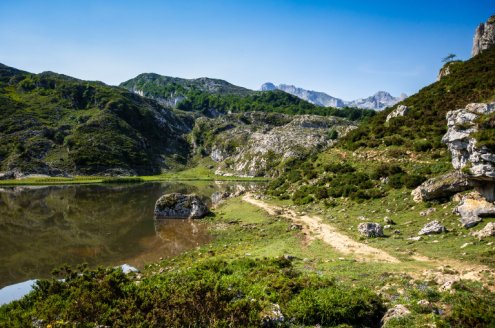Geology of the Picos de Europa
The Picos de Europa are part of the Cantabrian mountain range. Its division into three different massifs (Western, Central, and Eastern) by deep valleys, leads to a large variation in altitudes providing diverse scenery such as immense woods, mountain pastures, and limestone rock formations. This varied landscape promotes a high biodiversity including the most characteristic and endangered species of the Cantabrian mountain range.
The Central Massif, the most abrupt of the three that make up the Park, is where you find Torrecerredo (the highest summit in Picos with 2 648 m), Naranjo de Bulnes or Urriellu (2 519 m), and Pico Tesorero (2 570 m). This last peak is where the borders of the three different provinces meet. The Western Massif covers the largest area and is where Peña Santa de Castilla (2 596 m), Peña Santa de Enol (2 486 m), and the Lakes of Covadonga are located. The Eastern Massif, smallest in area and lowest in altitude, offers more accessible peaks as well as the striking historical remains of past mining that highlight the difficulties of the old practices.
Geological formation
The formation of the Picos de Europa is related to the Hercynian and Alpide orogenies that occurred during the Carboniferous and the Tertiary periods, respectively. It was during the Carboniferous when the sedimentation of carbonates on a marine platform began, accumulating up to 1 000 metres of calcareous sediments that formed the limestone found in the Picos.
Glacial actions during the last two million years have played a key role in forming the current landscape in the Picos. Sink holes (jous) where lakes such as Enol and Ercina are found, moraines like the Llomba del Toro in Áliva, and extensive rock falls show the glacial impact in every corner of the National Park.
Karstification is another form of erosion of the calcareous massifs. The dissolving of the limestone by water leads to the erosion of both the surface and interior rock of the limestone massifs. These mountains are one of the most important karstic landscapes in the world, especially valued by national and international cavers that explore the depths of the massifs every season.
 |
 |




Opening hours: Mon-Fri 9:00am – 6:00pm (CET)
Opening hours: Mon-Fri 9:00am – 6:00pm (CET)